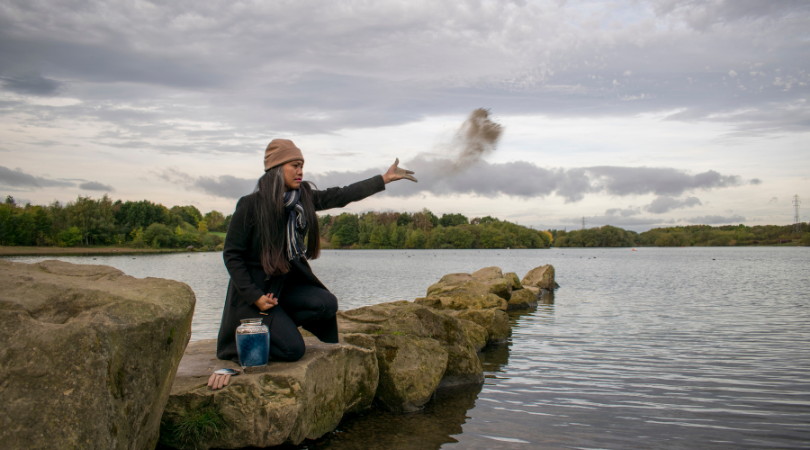3 Things to Know About Scattering Ashes

Almost half of all families in the United States now choose cremation over a traditional burial. Despite this rising population, there are still many questions and misconceptions about the cremation process and, in particular, how to handle the cremated remains once they are received.
These are three of the more common questions people ask about about how to scatter ashes:
What Should I Expect to Receive After Someone is Cremated?
After cremation, families have a few options for how they can receive the cremated remains. They can purchase and supply an urn or another container to hold the cremated remains. If no container is supplied, the crematorium will typically place them in small bag or box to return to the family.
Although the term “ashes” makes people think of sand or the ashes from a fireplace, cremated remains will more closely resemble a white or greyish gravel.

Is it Illegal to Scatter Ashes?
When it comes to the question of whether or not it is illegal to scatter ashes, there are very few official laws in place. While you should always request permission before scattering ashes on private property, there are no laws about where or how ashes should be scattered on public property.
The one exception to this is if one plans on scattering ashes in the ocean. Burial at sea is covered by the Clean Water Act, and there are a few specific rules people must follow:
- A person must be at least three nautical miles from shore and in water that is at least 600 feet deep before scattering ashes.
- When scattering the ashes, only decomposable items such as wreaths or flowers may be added to the water.
- Please refer to the United States Environmental Protection Agency Burial at Sea policy for more information.
Whether scattering ashes on sea or land, non-disposable items such as urns or other containers should not be left behind.

How Do I Scatter Ashes?
There are many different ways to honor loved ones while scattering their ashes.
Casting is the act of scattering the ashes into the air. Ashes will only travel a few feet. For the best experience, check the wind direction to avoid having the ashes blown back.
Trenching is another option. With the trenching of ashes, loved ones bury the ashes in the ground, either pouring them out into the earth or burying them inside a biodegradable container. Ashes can also be scattered on the soil and then raked into the ground.
Some families look for more unique ways to scatter ashes that reflect their loved one’s personality including airplane releases, turning the ashes into coral reefs, or sending the ashes into space.
If planning to scatter ashes in multiple places or divide them among several family members, it is important for one to tell their funeral director in advance. They can have the ashes divided before they are returned.
Bereavement Support
Whether scattering a loved one’s ashes soon after their death or waiting for a period of time, it can be an emotional experience. Crossroads Hospice & Palliative Care provides complimentary Grief Recovery Groups in all the areas we serve. Crossroads also offers The Journey After, a guide to bereavement.
Recommended Reading:
Cremation: What You Need To Know
The Funeral Rule: 10 Guaranteed Rights of the Bereaved
Personal Remembrance for the Holidays
If you found this information helpful, please share it with your network and community.
Copyright © 2017 Crossroads Hospice & Palliative Care. All rights reserved.




